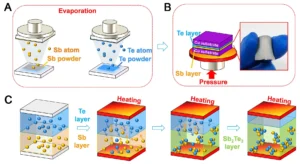Energy is a fundamental concept in physics that describes the capacity to do work or produce heat. It’s an essential aspect of the universe, underlying all processes and interactions. In physics, energy exists in various forms, each with its own units of measurement, and is governed by the law of conservation, which states that energy cannot be created or destroyed, only transformed from one form to another.
Forms of Energy:
Energy manifests in numerous forms, categorised broadly as either potential or kinetic energy.
- Potential Energy: This type of energy is associated with an object’s position or state. It includes gravitational potential energy, elastic potential energy, chemical potential energy, and nuclear potential energy.
- Gravitational Potential Energy : The energy possessed by an object due to its position relative to the Earth’s surface. It is calculated using the formula Gravitational PE = mgh, where m is the mass of the object, g is the acceleration due to gravity, and h is the height of the object above a reference point.
- Elastic Potential Energy (PE_elastic): The energy stored in an elastic object, such as a spring or rubber band, when it’s stretched or compressed. It is given by the formula PE_elastic = (1/2)kx², where k is the spring constant and x is the displacement from the equilibrium position.
- Chemical Potential Energy: The energy stored in the chemical bonds of molecules. When chemical reactions occur, this energy can be released or absorbed.
- Nuclear Potential Energy: The energy stored in the nucleus of atoms, particularly in nuclear reactions.
- Kinetic Energy: This type of energy is associated with the motion of an object. The kinetic energy (KE) of an object depends on its mass and velocity and is given by the formula KE = (1/2)mv², where m is the mass of the object and v is its velocity.
Units of Energy:
Energy is measured using various units, depending on the form of energy being discussed. Some common units include:
- Joule (J): The standard unit of energy in the International System of Units (SI). One joule is equal to the energy transferred when a force of one newton acts over a distance of one meter.
- Calorie (cal): A unit of energy commonly used in chemistry and nutrition. One calorie is defined as the amount of energy required to raise the temperature of one gram of water by one degree Celsius.
- Kilowatt-hour (kWh): A unit of energy commonly used for billing electricity usage. One kilowatt-hour is equal to the energy consumed by a one-kilowatt appliance operating for one hour.
- Electron-volt (eV): A unit of energy commonly used in atomic and particle physics. It is defined as the energy gained or lost by an electron when it moves through an electric potential difference of one volt.
The relationship between units of energy can be understood through conversion factors and mathematical relationships. Here, we’ll explore the relationships between some common units of energy: joules (J), calories (cal), kilowatt-hours (kWh), and electron-volts (eV).
- Relationship between joules and calories:
1 calorie (cal) = 4.184 joules (J)
This conversion factor allows us to convert between calories and joules. For example, if we have an energy value in calories, we can multiply it by 4.184 to convert it to joules, and vice versa.
- Relationship between joules and kilowatt-hours:
1 kilowatt-hour (kWh) = 3.6 million joules (J)
This conversion factor allows us to convert between kilowatt-hours and joules. For example, to convert energy consumption from kilowatt-hours to joules, we multiply by 3.6 million, and to convert from joules to kilowatt-hours, we divide by 3.6 million.
- Relationship between joules and electron-volts:
1 electron-volt (eV) ≈ 1.602 x 10^-19 joules (J)
This conversion factor allows us to convert between electron-volts and joules. Electron-volts are much smaller units compared to joules. In particle physics, energies are often expressed in electron-volts due to the small scales involved.
The Law of Conservation of Energy:
The law of conservation of energy is one of the most fundamental principles in physics. It states that the total energy of an isolated system remains constant over time. In other words, energy can neither be created nor destroyed; it can only change forms or be transferred from one object to another.
This law is based on the principle of the conservation of mass-energy, which is a fundamental concept in modern physics. According to Einstein’s famous equation, E = mc², energy (E) and mass (m) are interchangeable; they are two different forms of the same underlying quantity.
The conservation of energy has profound implications for understanding the behaviour of physical systems. It allows scientists to predict how energy will be transformed in various processes, from mechanical motion to chemical reactions to nuclear reactions.
Examples of Energy Transformation:
- When a ball is thrown upward, it gains gravitational potential energy as it rises and loses kinetic energy. At the highest point of its trajectory, when its velocity is zero, all of its initial kinetic energy has been converted into gravitational potential energy. As the ball falls back down, it loses potential energy and gains kinetic energy until it reaches the ground.
- In a simple pendulum, potential energy is converted into kinetic energy and back again as the pendulum swings back and forth. At the highest point of its swing, the pendulum has maximum potential energy and minimum kinetic energy, while at the lowest point, it has maximum kinetic energy and minimum potential energy.
- In a chemical reaction such as the combustion of gasoline in a car engine, the chemical potential energy stored in the gasoline is converted into thermal energy (heat) and mechanical energy (motion of the car).
In summary, energy is a fundamental concept in physics that comes in various forms, each with its own units of measurement. The law of conservation of energy dictates that the total energy of an isolated system remains constant over time, with energy being transformed from one form to another but never created or destroyed. This principle underlies our understanding of the behaviour of physical systems and is essential for explaining phenomena ranging from the motion of objects to the behaviour of atoms and molecules.




